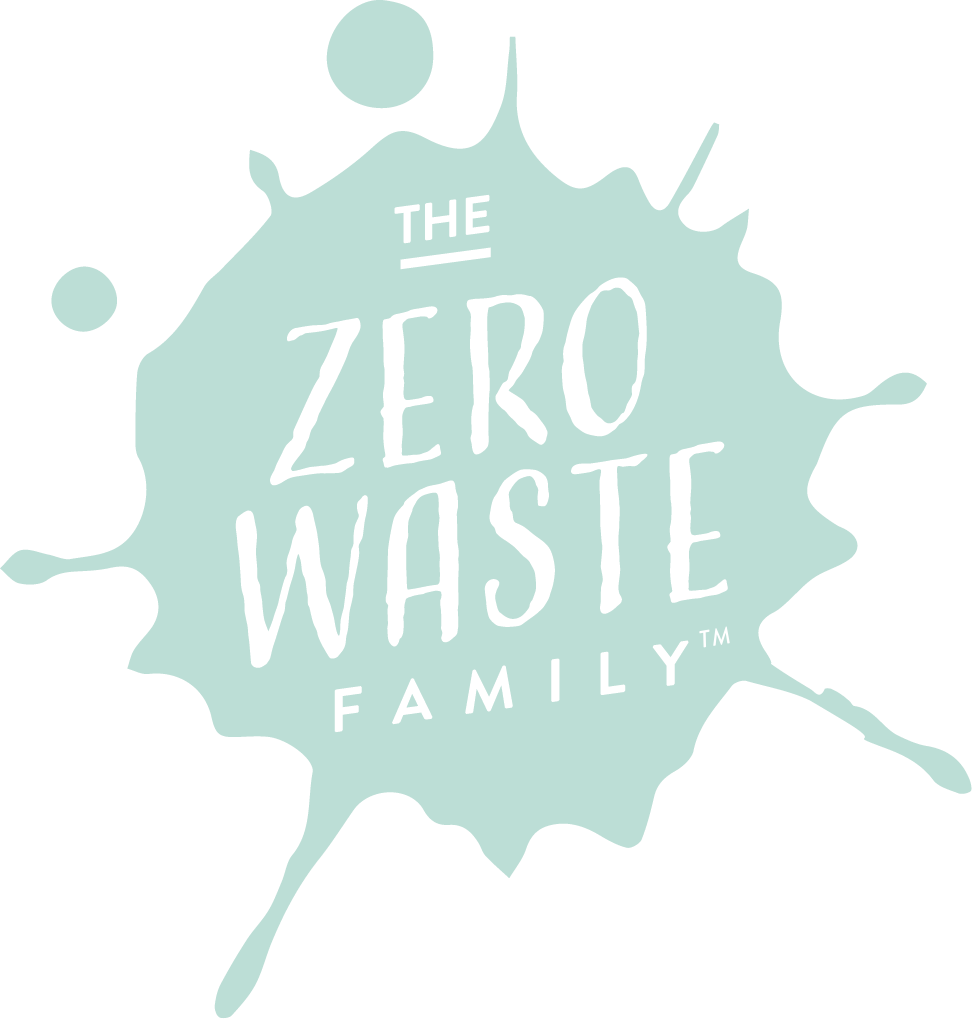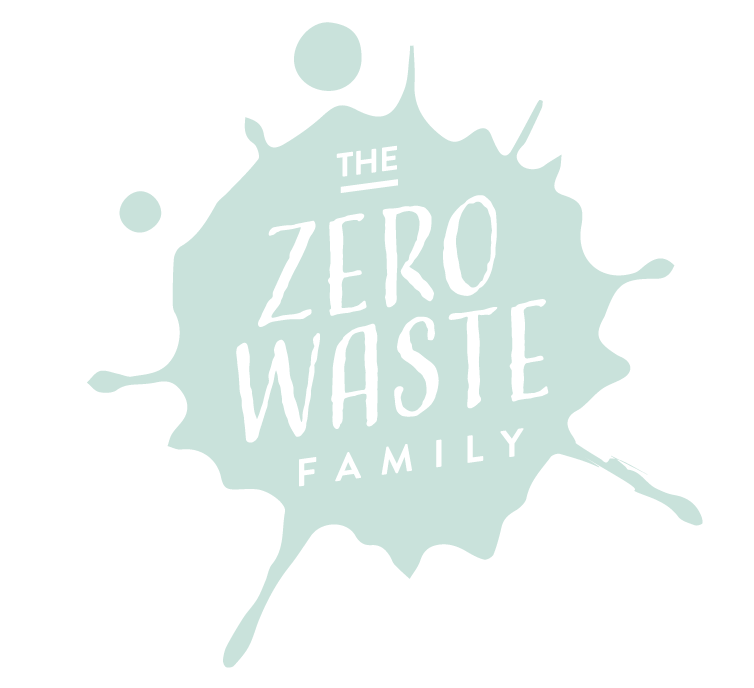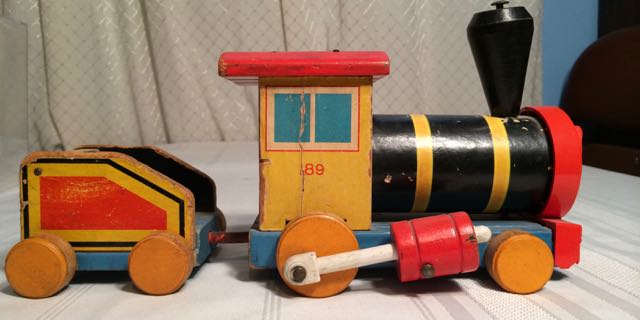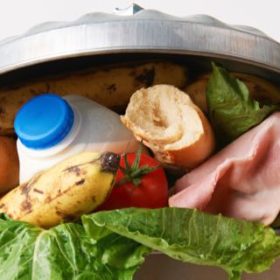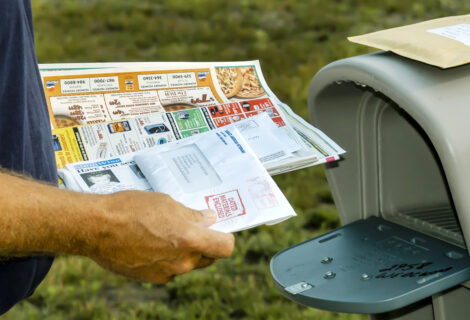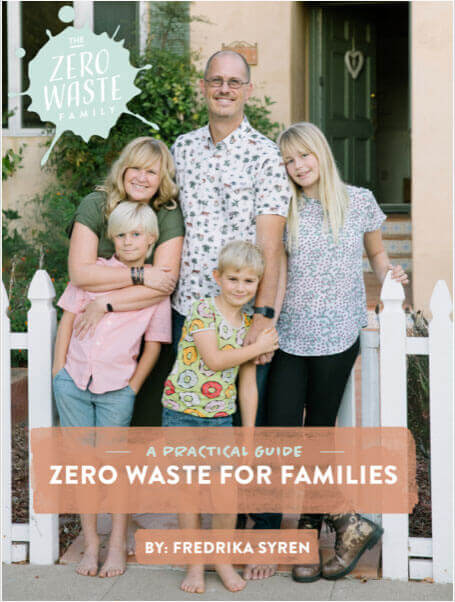By Fredrica Syren:
When I was 8 years old, my grandfather gave me a baby doll for Christmas. She was so pretty, and I could feed her and change her. I named her Mia. I still remember the joy of my special doll. Now I am the mom of a little girl who loves dolls, and last year Santa brought her an American Girl Doll named Grace. 
There is nothing better than a Christmas day with children eagerly opening their gifts to find that special toy they have wished for. As a parent, it can be very tough to know which toys are safe or even age appropriate. Unfortunately, one major job we parents have is to make sure whatever toys are given to our kids are safe in order to make sure that playtime is fun without worries,
The first step in buying safe toys for your child begins by simply reading age guidelines that should be written on the toy’s packaging. This is how you know if a toy is age appropriate and therefore safe for your child at all. Playsafe.org offers a research-based guide that helps you choose toys that will match your child’s age, interests, abilities and key developmental stages.
Toy Industry Association (TIA) is a not-for-profit trade association representing all businesses involved in creating and delivering toys and youth entertainment products for kids of all ages. Here are their tips for buying safe toys:
• Be sure to check and follow age guidance and other safety information on toy packaging. Remember, the age grading isn’t about how smart your child is—it’s based on the developmental skills and abilities of children at a given age, and the specific features of a toy.
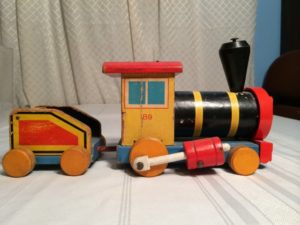
Whenever I buy a toy for my three children, I always check first at U.S Consumer Product Safety Commission to see whether it has been recalled.At the bottom of its page is a search engine where you can search a particular toy.
For us parents who try to buy toys without breaking the bank or who favorused toys, here are some great tips from Consumer Safety on how to buy safe toys the frugal way:
Discount Toys
We all love a good deal, but sometimes you have to wonder: Why is that toy so much cheaper than others like it? There could be a number of reasons, including:
Product companies are looking to turn a profit, and in some cases that means ignoring safety concerns and using cheaper, often less safe materials and designs. This is especially true of lesser-known and “knock-off” brands that have less capital than their larger competitors, and who may take shortcuts to keep production costs down. No matter if you’re buying gifts from big brands or relatively unknown companies, always test the products ahead of time. If you’re shopping online, read the reviews — especially any negative ones that might offer insight as to the safety of the device.
 Used Toys
Used Toys
Buying gifts at thrift stores, consignment shops, rummage sales and online marketplaces like EBay or Craigslist can be a great way to find good deals without breaking the bank. However, you need to be especially careful when buying things from these outlets to make sure the gifts you purchase are safe. Here are some things to keep in mind:
• Avoid buying secondhand baby furniture or equipment, as safety standardsfor these items have changed significantly in recent years.
In most cases, there’s nothing wrong with buying something secondhand. Just remember to give whatever you buy a good wash when you get home.
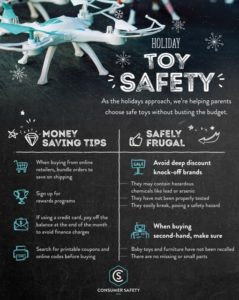
Did you know that, around the holiday, almost 2 billion toys and games are sold in the United States alone? And that before a toy can be sold in a store or on a website, it’s required to have been tested and certified as compliant with more than 100 standards and tests for safety — and be certified by an accredited toy-testing lab?
